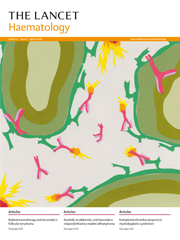PC > Qualis A1
Intravenous iron sucrose versus oral iron...
Authors: Montano-Pedroso, Juan Carlos ; Bueno Garcia, Elvio ; Alcântara Rodrigues de Moraes, Mariana ; Francescato Veiga, Daniela ; Masako Ferreira, Lydia
FI 11.99

Lancet Haematology, v. 5, p. e310-e320, 2018
DOI: http://dx.doi.org/10.1016/S2352-3026(18)30071-1
aluno Doutorado
Summary
Background - Anaemia and iron deficiency are common after post-bariatric abdominoplasty, which can involve removal of large areas of skin with associated blood loss. Because the oral absorbability of iron is reduced after bariatric surgery (through reduced intake, reduction of gastric acid secretion for conjugation of iron, and separation of the iron-absorptive areas of the duodenum and jejunum), it has been hypothesised that postoperative intravenous iron supplementation might be used to treat anaemia and iron deficiency in patients submitted to post-bariatric plastic surgeries. We aimed to assess whether intravenous iron administered postoperatively in post-bariatric abdominoplasty could result in increased blood haemoglobin concentrations compared with oral iron supplementation.
Methods - In this open-label, randomised, superiority trial, we recruited women aged 18–55 years undergoing post-bariatric abdominoplasty at two public tertiary referral hospitals in São Paulo, Brazil. Eligible women had been treated for previous obesity with bariatric surgery using the vertical banded gastroplasty technique with Roux-en-Y gastric bypass by laparotomy; had grade III contour deformity via the Pittsburgh rating scale; and had a post-bariatric body-mass index (BMI) lower than 32 kg/m2, with stabilised weight loss for at least 6 months. Women were randomly assigned (1:1) to receive postoperative iron supplementation with two intravenous infusions of 200 mg of iron sucrose (intravenous group) or 100 mg of iron polymaltose complex orally twice a day for 8 weeks (oral group). The primary outcome in both groups was blood haemoglobin concentration at postoperative day 56 after abdominoplasty, with a minimum clinically relevant difference of 1·5 g/dL. Analyses were performed on an intention-to-treat basis. This trial is registered with ClinicalTrials.gov, number NCT01857011, and the Brazilian Clinical Trials Registry, number RBR-2JGRKQ. The trial is completed.
Findings - From April 7, 2014, to June 27, 2016, 102 post-bariatric patients were assessed for eligibility. 56 patients were eligible and were randomly assigned, with 28 allocated to each group. Mean baseline haemoglobin concentration was slightly higher in the oral group than in the intravenous group (12·71 g/dL [SD 1·06] vs 12·24 g/L [1·09]), and by post-operative day 56 was 12·54 g/dL (SD 1·18) and 12·80 g/dL (0·81), respectively (mean difference of 0·26 g/dL, 95% CI −0·28 to 0·80; p=0·009 in favour of the intravenous group). The minimum clinically relevant difference in concentrations was not reached. No adverse events were recorded in the intravenous group, whereas in the oral group, constipation was recorded in five (18%) patients, diarrhoea in three (11%), and nausea in one (4%) patient.
Interpretation - Postoperative intravenous administration of iron increased haemoglobin concentrations at 56 days post-operatively and reduced iron deficiency, without adverse events. Although superiority of intravenous iron was not shown, intravenous administration might be useful in post-bariatric patients, especially in those who have body-contouring treatment involving a second surgery within a short period of time. Larger trials, and trials using higher intravenous doses of iron, are needed to further assess the potential efficacy and safety of intravenous iron administration after post-bariatric plastic surgery.
Funding - The São Paulo Research Foundation (FAPESP).


